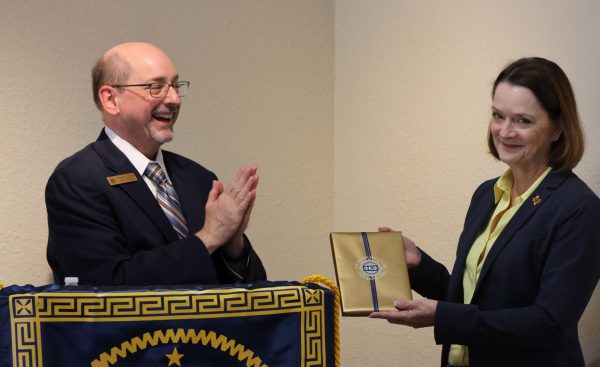Faculty lacks diversity
In a world where different cultures intertwine, students need to feel represented through the faculty on campus. Diverse faculty not only enhances opportunities for learning, but it creates an open environment for the different cultures reflected within the campus.
Provost and Vice President for Academic Affairs James Johnston said, “It’s important that we attract the underrepresented populations, because in higher education [students] want to see people in those roles that look like [them], or come from the same background as [them]. More importantly recruiting more diverse faculty adds to the value of education.”
Learning can often become impoverished when students are in a homogenous group of like-minded individuals who share the same kinds of experiences, beliefs, and aspirations. Though MSU strives to create an environment reflecting the student body, their efforts have gone unnoticed.
What is diversity?
As a liberal arts institution, MSU takes pride in creating an education that suites all backgrounds and cultures. Therefore, it is even more important that as a university, diversity is not just applied within the student body but the faculty as well.
“Beyond the normal definitions of underrepresented populations, it’s important for us to reflect the student body that we serve. Diversity is more about the representation of all subsets of the population, whereas inclusion relates to more of an understanding and acceptance. It’s about embracing the differences that we each represent,” said Johnston.
Syreeta Greene, director of Equity, Inclusion, and Multicultural Affairs, said, “Diversity is simple. It just means there are different types of people with different backgrounds, abilities, skill sets and experiences. The question really becomes how inclusive are we and are we ensuring that there is equity in the opportunities that are available to individuals within the environment.”
Eduardo Colmenares-Diaz, assistant professor in computer science, said, “Diversity is about having people who share the same values, background and culture. Have a diverse campus can give students all around the world motivation, because they see someone just like them being successful. Diversity also creates unity and bonds, while making sure students don’t feel alone, especially international students.”
Adam Y.C. Lei, professor of finance, said, “Diversity is people of different region, different background and of different opinion. Diversity is not just which country you are from. One part people sometimes forget, is there could still be diversity within the same race, some people are more conservative or more liberal. Through diverse opinion, students can learn.”
Though each individual may interpret diversity in different ways, the bottom line is that diversity is important and it can benefit both students and faculty in monumental ways. Higher education is more than learning inside the classroom. Gaining new experiences and insights on life cannot just be done with books and lectures, but through each individuals differences students and faculty gain long-term knowledge.
The Numbers
According to the MSU facts, the student body represents more than 40 different states and 54 foreign countries. Though the university pushes diversity within the student body, the lack of information concerning the demographics of faculty and the absence of policies reflects the importance of recruiting diverse faculty.
“We don’t have specific policies set in place to meet a certain quota of diverse faculty,” said Johnston. “In the absence of some formal policy, we are certainly paying attention to where we post job openings that would encourage or attract the underrepresented populations.”
As of March, the MSU official website does not contain any information relating to the demographic breakdown of the faculty. The Office of Institutional Research and Assessment includes information concerning the breakdown of enrollment, retention rates and everything else in between.
Johnston said, “I know [the numbers] are certainly not where we would want it, but I think that’s true of not just higher education or this institution but of all professions and areas in general.”
Neighboring universities, such as Cameron University, and University of North Texas both include faculty demographics on its official website. The breakdown of faculty demographics includes gender, race/ethnicity, ranking, and degrees earned.
Policies and Improvement
The hiring process for faculty positions is done within each department. Each department pays special attention to where job listings are posted to ensure faculty of the underrepresented population are given the opportunity to apply.
“Due to our increased efforts of recruitment, the faculty we have hired and attracted over the last few years has been broader than we have had in our past. It’s about where and how you advertise and recruit, especially in the absence of policies,” Johnston said.
The amount of diverse faculty has been stagnant over the years. According to the National Center for Education Statistics, as of Nov. 1, 2017 MSU has had fewer than 15 minority faculty and these numbers have neither increased or decreased.
Greene said she fears MSU has entered a vicious cycle.
“The [university] recognizes the problem and is working to improve and close that gap. It’s not something that the university doesn’t recognize, but sometimes these things are a vicious cycle within themselves. Someone could be interested but they see there is a lack of diversity so they choose not to come. When they don’t come this adds to the lack of diversity,” said Greene.
Colmenares-Diaz said he believes the location of the university and the quality of the applicants may have an impact on the amount of diverse faculty.
“Some individuals are attracted to bigger universities and cities, also living circumstances can influence people’s decision. It really boils down to the applicants, many may not have the skills that the university is asking for. The university is very fair when it comes to the application process, and the university can’t hire potential faculty simply because they are a minority or because they are from a certain background. The university has to put the students first and the students will benefit from whomever happens to have the best skills to teach them,” Colemnares-Diaz said.
Perspective
As a minority faculty especially within a predominately white institution, some difficulties can arise.
Greene said believes she is often times seen as the go-to person for other faculty members on a number of different topics and conversations, particularly around race and ethnicity.
“I can’t say I have explicitly experienced any direct discrimination, but there have definitely been some forms of micro-aggressions. I have never experienced anything so overt that it would rise to the level of discrimination. Often times these are things we experience as we go through life and it becomes one of those things that we learn how to respond to in a resilient type of way,” Greene said.
With the numbers of underrepresented faculty being low, Greene said she experiences a lack of support.
“Though not every person of color is going to share the same ideas or perceptions, it’s important to feel that connection and sometimes it’s hard. Not saying that there aren’t people inside and outside my identity group who can’t at least empathize, but there are some very frank and open discussions that you can have with people who have similar identities to you. It’s just more comfortable,” Greene said.
Colmenares-Diaz said it would be nice to have people that share the same culture as him, but overall he doesn’t think much about being a minority faculty.
“It would be nice to have more people that share the same culture, but apart from that I don’t experience any problems. I never have any problems getting along with my American counterparts, it only becomes more of a problem for me outside of work,” Colemanres-Diaz said.
Essentially, the experience each faculty member undergoes depends on the department they educate in. Lei said he believes MSU is very diversified campus. He also said, within the college of business there are many faculty members with different backgrounds and cultures.
“My experience of being a minority faculty, may be different from others. Within the business college, we are actually very diversified, we have people from China, Taiwan, Vietnam, India and many other parts of the world. I think the problem is more college specific,” Lei said.
How does the lack of diverse faculty impact students?
Kendra Scott, psychology senior | “In my major there aren’t any professors that look like me, and being a psychology major it’s easy for professors to just give statistics without relating to the issues they speak upon. The lack of diverse faculty creates a barrier. It can be hard to create a connection with the professors.”
Jaidan Vanover, marketing sophomore | “The lack of diversity in faculty discourages me. I feel like people with the same ethnicity as me do not make it very far in life.”
Blakeley Berend, exercise physiology junior | “Though I don’t see a lot of diversity within the faculty, I haven’t been exposed to anything else so I’ve never seen a problem with it.”
Christopher Hawkins, criminal justice sophomore | “It comes back to relatability. There aren’t too many professors that can relate to a low-income family, as would an underrepresented faculty member.”
Khalil Finley, education sophomore | “It doesn’t have an impact on me anymore because I’m so used to not seeing faculty members of color. It definitely is an issue, because students need to feel represented.”
Jamilah Kangudja, exercise physiology junior | “It’s weird hearing my history being told by someone that cannot possibly relate.”
Destiny Brown, criminal justice sophomore |“The lack of diverse faculty makes it harder for me to open up and become comfortable around my professors. It’s hard for them to relate or understand the struggles a student of color may face being at a predominately white institution.”
Kiera Young-Hardeman, social work sophomore | “The presence of diverse [faculty] could expand career aspirations. Having more diverse faculty means having different role models that could relate to you. Diversity within the faculty could also benefit the university because many perspectives are brought. It could also shape the campus culture and bring more awareness to different cultures.”
Anthony Tennison, kinesiology sophomore | “The absence of assorted workforce doesn’t generally affect me. My principle objective is to come to class and get my degree. Seeing more variety within the personnel that may identify with me is not something I can control.”

Hey ya’ll! It’s Khirstia Sheffield from the greatest city, Dallas, TX. I came to Wichita Falls to stir up the pot and step outside of big city living....






